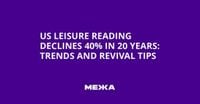It’s a scene many remember from childhood: a parent or grandparent settling in with a storybook, voices rising and falling with each character, the world outside fading away. Yet, according to a comprehensive new study, that cherished ritual—and reading for pleasure in general—is slipping away from American life at a staggering rate. Over the past two decades, daily reading for enjoyment among Americans has plummeted by more than 40%, a decline that experts say could have deep implications for the nation’s culture, education, and public health.
The findings, published August 20, 2025, in the journal iScience, come from a sweeping analysis by researchers at University College London and the University of Florida. Drawing on data from over 236,000 participants in the American Time Use Survey between 2003 and 2023, the study paints a sobering picture: the percentage of people who pick up a book, magazine, or e-reader each day has dropped by about 3% every year. This isn’t a blip—it’s a steady, persistent slide. “This is not just a small dip—it’s a sustained, steady decline of about 3% per year,” Jill Sonke, Ph.D., director of research initiatives at the UF Center for Arts in Medicine and co-director of the EpiArts Lab, told Phys.org. “It’s significant, and it’s deeply concerning.”
The study’s authors say the decline is not uniform across the population. According to CNN, the steepest drops were recorded among Black Americans, those with lower incomes or educational attainment, and residents of rural areas—groups that already face disparities in access to books, libraries, and other reading resources. By 2023, daily reading among African American families was 49% lower than among White families. “While people with higher education levels and women are still more likely to read, even among these groups, we’re seeing shifts,” said Jessica Bone, Ph.D., senior research fellow at University College London. “And among those who do read, the time spent reading has increased slightly, which may suggest a polarization, where some people are reading more while many have stopped reading altogether.”
Despite the downward trend, there are glimmers of hope. For those who do still read, the time devoted to the activity has actually grown, averaging more than 90 minutes daily, according to ABC News. And while reading with children remains rare—just 2% of adults reported doing so on an average day—it hasn’t declined much over the past 20 years. “We know that for children, being read to is linked to preparation for reading, preparation for early education, and it’s also linked to reading attainment later on,” Sonke told CNN. “Of course, those educational implications are really significant, and I think they become even more significant as we enter this era of AI.”
So what’s behind the decline? The researchers point to a confluence of factors. The rise of digital media—think social platforms, streaming, and endless online browsing—has undoubtedly changed how Americans spend their leisure time. “There’s a correlation between time spent on digital media and reductions in reading time,” Sonke noted in her interview with ABC News. But it’s not just about screens. Economic pressures, shrinking leisure time, and uneven access to books and libraries also play a role. “If you’re working multiple jobs or dealing with transportation barriers in a rural area, a trip to the library may just not be feasible,” Sonke explained to Phys.org.
Why does this matter so much? As researchers and literacy advocates repeatedly emphasize, reading for pleasure is more than a pastime—it’s a health-promoting activity. “Reading has historically been a low-barrier, high-impact way to engage creatively and improve quality of life,” Sonke said. Scientific studies have linked regular reading to stronger language skills, reasoning, empathy, and even better mental health and social cohesion. “We know that participating in the arts is a health behavior because it statistically results in improved health outcomes including well-being, social cohesion, mental health,” Sonke told ABC News. Daisy Fancourt, Ph.D., professor of psychology and epidemiology at University College London, added that reading supports “not only language and literacy, but empathy, social bonding, emotional development and school readiness.”
For children, the stakes are especially high. “When adults position themselves as fellow readers, my own research indicates that they model the value and satisfaction they find in their own literate lives and induct young people into such pleasures,” Teresa Cremin, professor of education and co-director of the Centre for Literacy and Social Justice at The Open University, told CNN. Reading together as a family not only supports early literacy but also strengthens emotional bonds—a benefit Sonke described as “really important to their well-being.”
Yet, all is not lost. Amid the overall decline, certain corners of the reading world are thriving. The popularity of series books, book clubs, and conversations about literature—often fueled by social media—has soared. Genres like romance, fantasy, and mystery are leading the charge, drawing in new readers and keeping the flame alive for longtime book lovers. “Whatever you enjoy reading can offer benefit,” said Cybil Wallace, Goodreads’ managing editor, in comments to CNN. “The most important thing is to find communities: friends, online readers, or podcasts where you can swap recommendations and discuss what you’ve read. A community helps make reading a sustainable habit.”
Experts recommend practical steps for rekindling a love of books: find a genre that matches your interests (if you love certain movies or TV shows, look for books with a similar vibe), set aside dedicated reading time—perhaps before bed or during a commute—and, most importantly, connect with others. Whether it’s joining a book club, following a podcast, or simply talking about books with friends, these strategies can help turn reading from a solitary pursuit into a shared joy.
There’s also a call for broader, systemic action. The study’s authors suggest that national strategies should not focus solely on children, but also address adult reading habits, given their impact on health and well-being. Making local libraries more accessible, encouraging book groups, and integrating reading into community activities could help reverse the trend. “Ideally, we’d make local libraries more accessible and attractive, encourage book groups, and make reading a more social and supported activity—not just something done in isolation,” Bone told Phys.org.
At its heart, the decline in reading for pleasure is about more than changing habits—it’s about what kind of society Americans want to live in. As Sonke put it, “When we lose one of the simplest tools in our public health toolkit, it’s a serious loss.” But with creativity, community, and a renewed focus on the joys of literature, there’s hope that the next chapter might look a little brighter.






